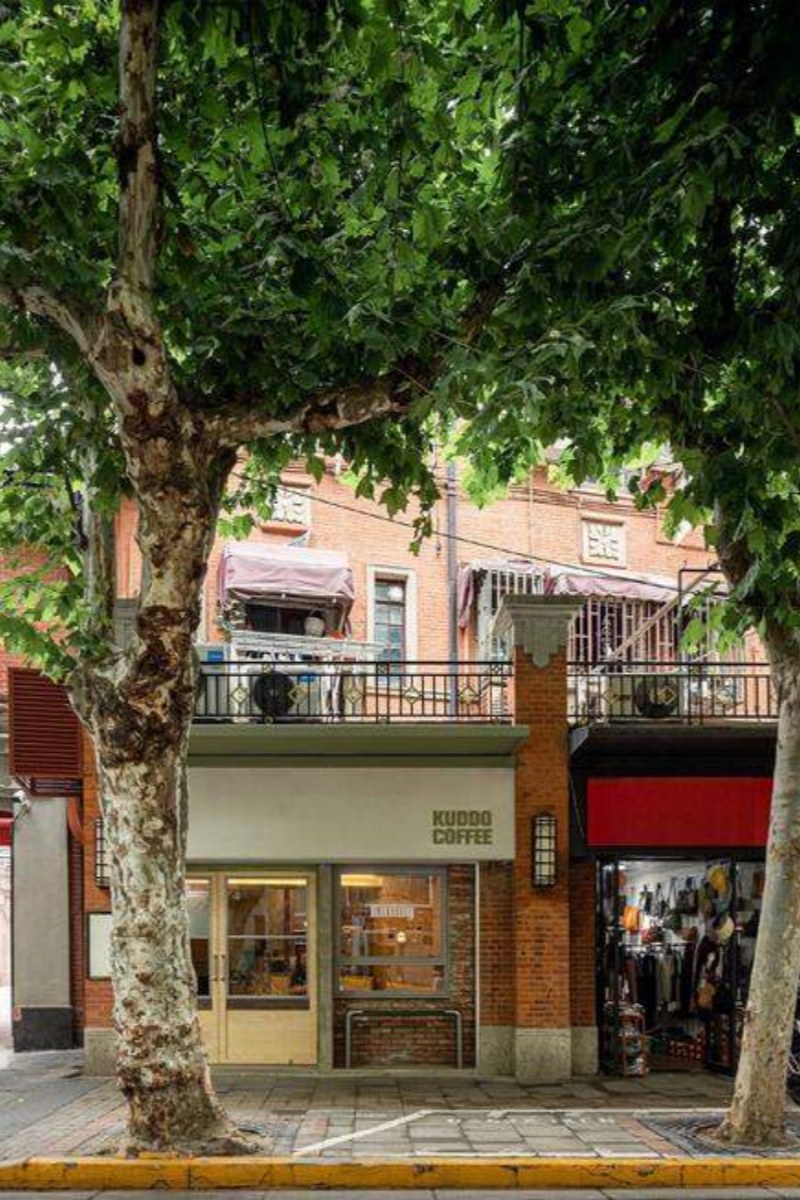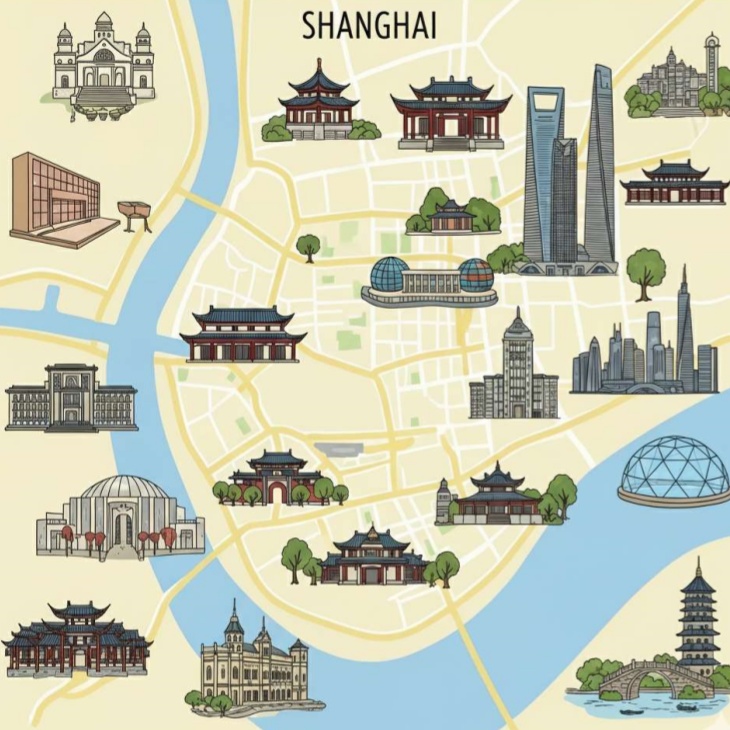Shanghai, the name itself suggests speed, gloss, and perhaps a hint of impatience. The skyline dashes upward so quickly that even the tourist camera feels breathless trying to keep pace. Strolling the Bund, you can almost hear the voices of old merchant shippers debating last night's exchange rates alongside the updated ping of mobile pay confirmations. Step into the French Concession and the rhythm shifts- brooding linden trees cast crooked patterns over quiet bistros and forgotten back lanes. Those contrasts- history, cuisine, neon noise- seem ready-made for whoever dares open a suitcase and hit the ground running. History scholar, food cart stalker, or plain curiosity-seeker; on any given afternoon, Shanghai is more than willing to meet you halfway.
What Are the Best Highlights of Shanghai?
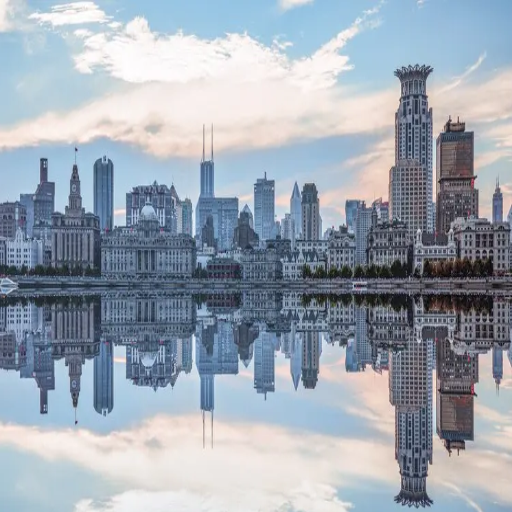
Exploring the Bund: A Must-See in Shanghai
The Bund runs like a ribbon along the Huangpu's far bank, cutting across a city that never stands still. First-time visitors almost always call the stretch iconic, and seasoned locals do little to correct them. Several national chapters of architecture lumber through the one-mile row-Gothic towers here, Baroque gables there, a sudden blaze of Art Deco up at the Customs House-and the mismatched spans somehow feel planned rather than improvised.
When the sun dips, millions of LEDs wake up in a cascade that leaves even hardened New Yorkers rubbing their eyes. Historians geek out over the slow fuse of East and West, while couples block the pathway for selfies that never turn out half as good as the real scene. White-linen kitchens on terrace edges compete with breezy cocktail lounges for customers who cannot settle the debate over fine dining and relaxed grazing. A five-minute ferry crossing lets anyone pretend that the skyline was sketched by hand and not by budget.
Strolling Through Yu Garden: A Peaceful Escape
Hidden amongst Shanghai's relentless pace, Yu Garden offers an unexpected pocket of calm. First laid out in the Ming era, more than four centuries ago, the horticultural space still testifies to eras vanishing art. It encompasses roughly five city lots and weaves together moss-covered outcrops, still ponds swollen with koi, and gnarled trees tracing their quiet histories. Stone-carved terraces overlook the mirrored Mid-Lake Pavilion; visitors glimpse yet another reflection from the steeply arched Zigzag Bridge. Every corner, every turn seems to slip straight out of ink-brushed scrolls. Just beyond the walls, a market pulses with hot dumplings, hand-painted fans, and the faint clang of street tambourines- so the garden sits stubbornly both nowhere and everywhere.
Shopping on Nanjing Road: A Shopper's Paradise
Stretching almost five uninterrupted kilometers through the heart of Shanghai, Nanjing Road has earned its fame as one of the world's busiest retail arteries. The thoroughfare splits neatly in two: the pedestrian-only strip known as Nanjing Road East teems with fast-fashion outlets and street-level electronics stalls, while Nanjing Road West rolls out a fancier red carpet of designer boutiques, five-star hotels, and gilded shopping malls. Swathes of foot traffic keep both segments humming from dawn till well after dusk.
Neon texts flicker overhead, at once timeless and utterly contemporary, so modern glass facades shelter century-old temples and Art-Deco theaters. Shoppers drift from imported sneakers to Shanghai-blend silk scarves, pausing to haggle over jasmine tea or snap up a hand-painted fan. Vans, tricycle carts, and corner diners swell the sounds of commerce with sizzling dumplings and chilled local lager. In every sense, the thoroughfare stands as an exuberant microcosm of the city's restless hustle and cosmopolitan appetite for variety.
What is the Nightlife Like in Shanghai?
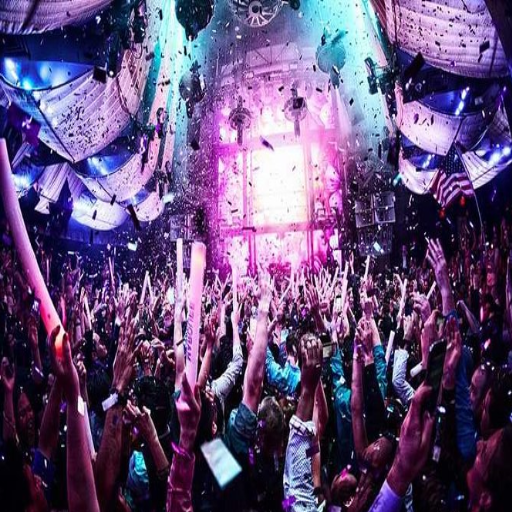
Where to Find the Best Nightclubs in Shanghai?
Shanghai lights up long after the office towers are swallowed by darkness, and its clubs mirror that sudden riot of color. Bar Rouge still reigns for patrons who measure a night out by the height of the terrace and the width of the horizon visible from the Bund. Over in Xintiandi, TAXX pulls a different crowd with thumping bass lines, blinking laser grids, and a headset-grade sound rig that keeps dancers in motion until dawn.
Those who crave a stage as much as a dance floor usually end up at The Pearl, where a restored thirties theater swaps symphonic orchestras for themed cabarets and live band mash-ups. A few back alleys later, Elevator keeps the pulse low but the beats experimental; the room is snug enough that every kick drum feels like an invitation. No single profile exhausts Shanghai nights, yet each room answers part of the question, What happens after the sun quits complaining?
Exploring Bars and Lounges: The Shanghai Nightlife Scene
Once the sun sinks behind the skyline, Shanghai reveals a second city with dim lights and lifted glasses. Cosy lounges nestle between hard-edged clubs, inviting anyone who wants to linger or converse with the ever-moving crowd. Speak Low, hidden inside three unmarked rooms in the Former French Concession, gives the impression that a friend has shared a secret worth keeping. Tall bar shelves guzzle shadows while bartenders measure every drop in a brass-rimmed coupe. Bar Rouge lies at the Bund's feet ten floors above street level. White linen and crimson accents frame a view so sweeping that the skyline seems almost magpie-quick, and the cocktails-ginger shrub, smoked mezcal, soft citrus-evaporate as fast as they appear.
The Camel Sports Bar, by contrast, wears its worn-out jerseys with pride. Two lopsided screens hang over a forest of mirrored taps, and the roar of one match bleeds quietly into the next. Hand-cut fries and barking commentators make Thursday night feel like a hometown ritual, not an overseas detour. Half a taxi ride away, Union Trading Company runs a different kind of play. A low-lit counter spins rum, olive brine, and a quick joke into something far better than it should be. The rumble of international playlists hovers just out of earshot, so patrons can decide whether the drink, the bartender, or the moment deserves the most attention.
Shanghai's bar culture refuses to sit still for long, mainly because each room reinvents itself. One night, the decor might feel borrowed from an old speakeasy; the next, it could resemble a glass greenhouse cantilevered over the river. Most regulars appreciate the restless mix, if only because nights when they crave nothing but raw hip-hop eventually give way to evenings when a single elegant drink savored against a skyline earns top billing. Very few global metropolises offer that kind of head-spinning range with zero warning.
Top Areas for Nightlife: French Concession and Beyond
The French Concession remains a cornerstone of Shanghai's nightlife, echoing with tree-filtered laughter and the snappy rhythm of taxi horns. Huddled behind arched doorways, speakeasies and craft-cocktail bars lure night owls with dim light and the scent of citrus peels. Speak Low commands respect for its stacked wooden lofts and labyrinthine menus, while Ferguson Lane roosts in the open air, giving revelers front-row seats to a sprawling skyline that pulses in slow motion.
Jing-an and the Bund refuse to be overshadowed. Jing-an turns modernity into a curated display, its gastropubs and neon-walled lounges angled at young designers with an appetite for pretty glassware and Instagram mentions. The Bund trades on raw historical swagger; its rooftop terraces frame the Huangpu like a slow-moving David Hockney, forcing tourists and neighbors alike to crane their necks and reconsider superlatives.
Shanghai nights never stand still; the rhythm shifts between mah-jong parlors from the 1920s and pop-up cocktail lounges on glass-sheathed rooftops. A casual stroll along the French Concession, a late snack in neon-soaked JingAn, or a taxi dash to the Bund all yield a different story before dawn breaks.
Must-Visit Attractions in Shanghai
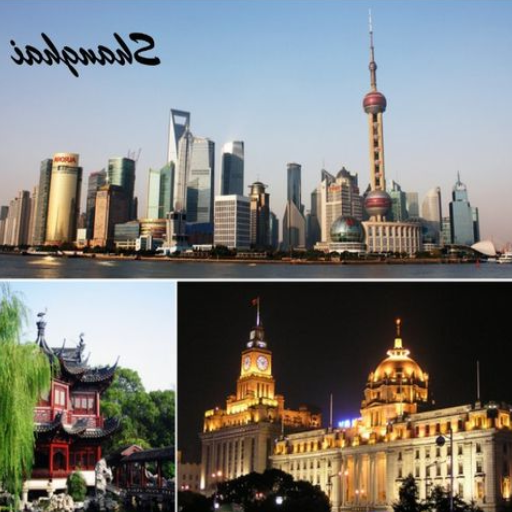
A Guide to the Shanghai Museum: Culture and History
People's Square pulsates with life, yet at its center, the Shanghai Museum rests in a moment of quiet contemplation. The building's rounded silhouette, a nod to the old idea of Heaven circling the flat Earth, draws camera clicks and genuine wonder. Admission is free, a small but meaningful invitation into the sweep of five millennia that follows every visitor through the glass doors.
Eleven permanent halls and three rotating rooms pace themselves like well-edited chapters, never overwhelming but always tempting the eye to linger. Polished bronze mirrors sit beside carved celadon bowls, while inked scrolls and crisp rice-paper exercises converse across the air of one gallery. Among these treasures the bronze room steals many hearts, the delicate reliefs telling tales of ritual long before they were recorded in books.
Step over to the jade alcove and the mood shifts; each slender dragon or lotus seems to hum with an ancient protector's dignity. Sliding a bit further, a furniture exhibit invites idle musings about scholars or merchants seated centuries ago over lacquered tables. Shelves dedicated to minority crafts promise a splash of color and rhythm that breaks from the Han-dominated narrative, reminding everyone that China's culture still speaks in many dialects, each worthy of attention.
Those hoping to augment their visit will find the Shanghai Museum stocked with multi-lingual audio guides and touchscreen kiosks that unpack the stories behind each artifact and brushstroke. A few hours inside the museum floor will likely leave anyone, a decade-long historian, devout painter, or an inquisitive traveler, with a richer sense of China's layered past.
Visiting Disneyland Shanghai: Fun for All Ages
Disneyland Shanghai first welcomed guests in June 2016, and its immediate splash of bright colors soon caught the world's attention. The resort now spreads over 1,100 acres and contains six full-fledged lands: Adventure Isle, Treasure Cove, Gardens of Imagination, Mickey Avenue, Tomorrowland, and Fantasyland. Every corner pairs cutting-edge thrill rides with design touches that nod to Chinese folklore, street life, and even local food stalls.
The Enchanted Storybook Castle is above the entire park, a sparkling behemoth that dwarfs any other Disney spire built to date. Inside, visitors drift through a miniature boat course called Pirates of the Caribbean- Battle for the Sunken Treasure, where animatronics and projection tricks let legends roam for real. Speed fiends queue next for Tron Lightcycle Power Run, a neon-tracer coaster that blasts them beneath a canopy of blinking LEDs. Tiny guests waddle toward Dumbo the Flying Elephant or wander the hedge-twist Alice in Wonderland Maze, both of which hand light-hearted escapism by the handful.
Disneyland Shanghai uniquely blends dazzling parades, street performers, and midnight fireworks; memories forged in the glow of those bursts of light tend to linger. Just outside the turnstiles, Disneytown offers a relaxed mix of boutique shopping and casual dining, while the adjacent Shanghai Disney Resort provides plush accommodation for families who want to drift from the parks to comfortable beds without the hassle of a commute. Taken together, the attractions, the convenient extras, and the almost reflexive world-class service allow guests to feel as if they have stepped directly into a storybook, if only for a day or two.
Discovering the Huangpu River: Scenic Views and Activities
The Huangpu snakes through Shanghai with surprising grace, a ribbon of water that has always ferried merchants and migrants alike. At roughly 113 kilometers, it stitches the steel and glass towers on one bank and the cream-colored colonnades on the other. Many visitors first pause at the uneven cobbles of the Bund before drifting eastward to stare up at the glittering quads of Lujiazui. The two districts differ in epoch and ambition while reassuring each other of Shangaia's enduring penchant for paired contrasts.
Hopping onto one of the ferries or pleasure boats still counts as a rite of passage, and the skyline looks fresher with each hull turn. Sunset voyages reveal a city tangled in neon, and afterward, elated crowds spill onto the Binjiang and West Bund promenades. Seasonal fairs, pop-up performances, and casual cycling races keep the waterfront sounding lively even after tourist maps have turned yellow. Seen this way, the Huangpu serves less as a transit channel than as the interactive nerve of the metropolis, stroking and steadying its pulse at once.
What Are Some Travel Tips for Visiting Shanghai?

Best Times to Visit Shanghai: Weather and Events
Shanghai boasts a climate that shifts quickly, so savvy travelers pay close attention to the timing of their trips. Spring runs from March to May, greets visitors with mild highs between 10 and 21 degrees Celsius, and fills the streets with the pink and white blooms of cherry and magnolia trees. Cultural life bursts outdoors during those months; the Longhua Temple Fair draws families, and the Shanghai International Film Festival screens movies under the stars.
A similar welcome awaits people who arrive in autumn, from September to November, when temperatures linger around 16 to 24 degrees Celsius and the air is notably clear. Tourists can wander the Bund waterfronts or sit in Yuyuan Gardens without huge crowds blocking the view. Later in the season, Shanghai rolls out its spectacle: the Tourism Festival celebrates local food and music. At the same time, the China International Import Expo turns the exhibition center into a marketplace for goods from every corner of the planet.
From June through August, the air feels thick with humidity and the mercury frequently nudges 95°F, yet the city pulses with music festivals, late-night food stalls, and sunset river cruises. Twelve months later, December to February arrives with bone-chilling winds that sometimes force the thermometer to sit at 32F; Chinese New Year promptly breaks the quiet, filling the streets with dragon dancers, firecrackers, and lantern light.
Ultimately, the right moment hinges on whether you favor sweltering summers or shuttered winters. However, nearly everyone agrees that spring's cherry blossoms and autumn's harvest fairs showcase Shanghai's cultural heartbeat at its loudest.
Transportation Tips: Getting Around the City
Shanghai's transportation web is both extensive and surprisingly user-friendly for a metropolis of its scale. Nearly 400 kilometres of Metro track now thread through the city, neatly binding the airport, the waterfront, and the museum to one another. Trains arrive every few minutes-seen through the glass like clock hands-and the fare rarely pushes beyond a handful of yuan per ride, even at rush hour.
Shorter hops between neighbourhoods are easily met by the city's dense bus grid, which wanders where the underground does not. Hail a taxi or book a Didi, and the meter ticks quietly, though storms or holidays can send prices upward without warning. Virtually all of these trips are paid for with a tap of a phone screen, so loading either Alipay or WeChat Pay before you land saves a lot of fumbling.
A rented bike or electric scooter turns the Bund into a moving postcard for tourists who want more breeze. Dozens of colour-coded schemes leave machines near subway exits and shopping centres, so picking one up takes seconds. Just steer into the bright-blue lanes and strap on a helmet for your own sake- even the best roads can surprise you.
Passengers headed to either of Shanghai's airports can board the high-speed Maglev train and leave the bustle behind in minutes. The shuttle glides from Pudong International to Longyang Road in a slipstream of slick steel, finishing the run-roughly thirty kilometers-in eight incredible minutes, with a peak needle of 431 kilometers per hour. Backpackers and price-watchers still have the subway and a web of shuttle buses, both of which stop at the terminals and carry fares that barely dent an itinerary.
Crime rates in Shanghai hover near the low end of global league tables, but travelers score quick peace of mind by steering clear of street-hailed gypsy taxis. Routes plugged into a phone app before departure let visitors watch the map crawl accurately toward the next block, so surprise detours rarely disrupt the timetable. Multilingual signs dot platforms, trams, and walkways, and the stall-keeper beside the hotel desk seldom minds sharing directions in English, Mandarin, or both.
Safety Tips for International Tourists in Shanghai
Guard Your Belongings in Bustling Districts: Nanjing Road and the Bund fill up quickly, creating perfect cover for a wandering hand. Even though violent crime is low, a wallet can be lifted if it is left unattended. A zippered crossbody or a money belt worn under a shirt makes temptation less inviting. Flashing a new phone or a stack of cash invites a stare and a reach.
Travel via Licensed Transit Services: The Shanghai Metro is punctual, maps are in Chinese and English, and a single ride rarely tops 10 yuan. Grab a Didi or an app-based taxi only after confirming the plate on the screen matches the one on the car. Hail a Shanghai-registry cab by its gold insignia to avoid squeezed fares from unofficial drivers lingering outside malls.
Memorize a Few Mandarin Phrases and Lean Heavily on Apps: The question Where is so-and-so subway station? is easier to type than to mispronounce. Google Translate reads characters and offers spoken replies faster than most laptops. A smartphone can turn a bemused silence into a shared laugh when money, directions, or help are at stake.
Keep Emergency Contacts Tacked to Your Device: Dialing 110 rings the police; for ambulances, the correct sequence is 120. Both numbers respond in Mandarin, so writing emergency cards in pinyin and sounding them out as ee-bao and ee-er-zero simplifies stress. Saving a trusted hotel front-desk line as Security can cut panic time in half.
Honor Local Laws and Everyday Courtesy: Littering may earn a fine, and singing too loudly in a Wuzhen temple earns the quietest stares. Putting chopsticks vertically into rice resembles a funeral gesture, yet placing them neatly on the dish signals a meal well-timed. Respecting these small customs opens doors that larger permits cannot.
Keep an Eye on Air Pollution and Weather Warnings: Reported levels in Shanghai shift with surprising speed, often worsening in the colder months, so visitors should review daily indices and wear a mask when particulates spike. During the typhoon season, up-to-the-minute weather alerts become essential; obey the posted advisories and seek shelter if winds intensify.
These practical precautions allow foreign travelers to explore Shanghai's bustling streets, savor its culinary innovations, and absorb its storied past without compromising their safety or comfort.
Is Shanghai Worth a Visit for Tourists?
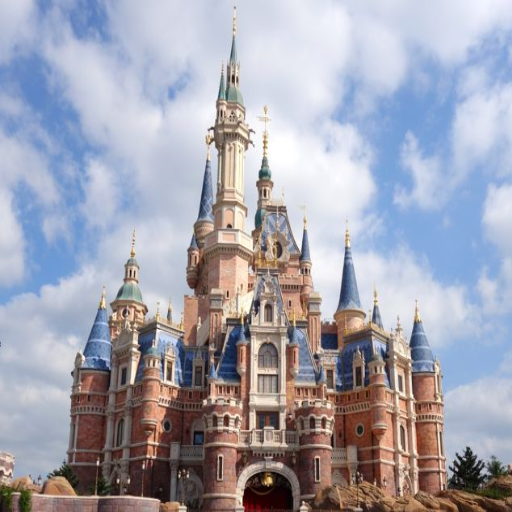
Reasons to Visit Shanghai: A Tourist's Perspective
Shanghai still hits travelers with a blend of history and futurism that few cities can match. The skyline is almost theatrical: blinking neon on the Oriental Pearl Tower, cold glass on the Shanghai Tower, and the stretched silhouette of the city hazy at dusk. Stand on the Bund for a second, and it looks as if the Colonial past stepped aside so high-rises could elbow one another for space. Most visitors swear the skyline alone rewrites their ideas of urban possibility.
Culture won't be outpaced, either. The Shanghai Museum piles centuries of jade, porcelain, and bronze into halls that echo but never upstage the objects. A quick stroll to Tianzifang or Xintiandi swaps grand halls for narrow lanes lined with yakitori stalls, craft galleries, and third-wave coffee roasters that have no idea what day it is. Food is its taxonomy, from street-market xiaolongbao that drip before you bite to tasting menus where chefs argue with gravity and afternoon light. Shanghai is a dial-up of China's past and the scatterplot of its global future, and tourists walk right through the current.
Shanghai sticks in the mind chiefly because of its remarkable pulse. One moment you can be jostling for space on glimmering Nanjing Road, and the next you are wandering through the stillness of a hundred-year-old Yuyuan Garden. Look up at dusk from a Huangpu River terrace and the city explodes with neon; look down and the cobblestones quietly remind you that a different century once ruled here. The photo albums still smell slightly of the humid light in the air during those late-night city-hall conversations. Awe, mischief, and a soft nudge toward being a better scholar all crowded into the same trip.
Why Shanghai is Considered One of China's Top Destinations
No other city quite mashes vintage Shanghai tea ceremonies with rooftop miniseries about bitcoin millionaires like this one does. One block past the Oriental Pearl, which glimmers most convincingly at night, a local brass band plays in a shadier park nobody marks on visitor maps. Even the Bund, that postcard oxymoron where colonial beaux-arts façades flirt with the skyline, manages not to hiss whenever new glass towers shove their way up. Heritage sits comfortably on the same bar stool with 5G pilots, and they both remember the day a city called Shanghai finally quit typing its name in Hanzi only.
Shanghai strikes visitors first with its living museum. Inside the pale-gold atrium of the Shanghai Museum, dynasty-era bronzes look almost conversation partners with the wire-frame installations lining the walls of the Power Station of Art across the river. Side alleys flirting with sesame oil and ochre chili powder scents offer a different kind of showcase: market vendors bantering in Shanghainese, temple incense curling toward the summer sky. Step down any side street and a fresh anecdote practically pulls at your sleeve.
The city never really clocks out. Mornings, sleeves rolled to the elbow, traders in Lujiazui click through spreadsheets that still smell of last nights humidity; evenings, expats and locals alike flow into Xin Tian Di, drifting between warehouse-bars that once housed cotton merchants; a half. Metro stopped away, and Longhua Temple rang its brass incense coils in a tempo known only to monks and the odd night-blooming plant. That tug-of-war between frenetic and slow threads keeps pulling me back, even after the passport has been stamped. It turns out Shanghai does the same thing to its residents: reinventing the skyline overnight and pretending none of us can tell.
Final Thoughts: Is Shanghai Worth Visiting?
Shanghai deserves a spot on any traveler's itinerary, and that recommendation comes from firsthand observation rather than internet hype. The city fuses its celebrated history with an insatiable urge to push toward tomorrow. You might stroll the shaded lanes of the Former French Concession one afternoon and later stand spellbound in front of Pudong's glass-and-steel spire. In between, sizzling dumplings at Yuyuan Market remind you that the everyday can be extraordinary.
The remarkable blend of cultural influences makes Shanghai stand out, turning every corner of the city into an open-air gallery. A visitor can wander through the polished halls of the Shanghai Museum before retiring to the cloistered quiet of Yu Garden; by night, the Bund offers a striped, electric panorama across the Huangpu River that seems ripped from a postcard and utterly real at once. History buffs, street-food pilgrims, and architecture-watchers all find their neighborhoods speaking directly to them, often within the compass of a single afternoon.
No guidebook can reasonably anticipate how Shanghais relentless reinvention sits comfortably alongside its deep-rooted traditions, yet anyone who returns discovers a new layer to peel back. The city still feels like a first encounter with the lights flickering alive along Zhongshan East Road at dusk. That sense of surprise is persistent and, I suspect, would follow any traveler who paused long enough to listen to the city's ceaseless chatter.
Frequently Asked Questions (FAQs)
Q: Is Shanghai worth the flight when Beijing and Hong Kong call out to first-time visitors?
A: Absolutely. The city fuses glassy skylines with alley cafes, pairing nineteenth-century foreign bank buildings with twenty-first-century light shows. Where Beijing rehearses the ancient and Hong Kong zips between sea and mountain, Shangaia height is overtaken only by its own appetite for change.
Q: Which landmarks do newcomers usually circle on their maps?
A: Walk the Bund at dusk, when mirroring neon fills the Huangpu, then drift into Yu Yuan, where mossy rockeries hush the hum. A lift ride up Shanghai Tower gives perspective on concrete and ambition, while side streets in the French Concession tempt with wisteria shade and preserved colonial brick.
Q: How does Shanghai's eating compare to Sichuan spice or Cantonese dim sum?
A: Shanghai claims a flavor profile of subtle sweet and soft salt, starting with juicy soup dumplings whose broth seems to defy physics. Markets, hawkers, and polished chefs play across that range, so diners easily switch from smoky street stalls to hushed Michelin rooms.
Q: Is Shanghai simple for tourists to navigate?
A: Very much so. The metro stretches for miles, buses fan out into every district, and taxis are never far away. A visitor can jump from the Bund to the French Concession without breaking a sweat.
Q: How does Shangkai's skyline stack up against Hong Kong's?
A: It stands shoulder to shoulder with Hong Kong and, some say, leans a bit taller. The Shanghai Tower, the Oriental Pearl, and a dozen others line the Huangpu River like a parade of polished glass. Each tower tells a different chapter of modern China's rush into the clouds.
Q: Should I break away from Shanghai and visit Hangzhou or Suzhou?
A: Without question. For good reason, Hangzhou's West Lake glimmers in postcards, while Suzhou's water gardens whisper centuries of silk trade. Both cities lie just an hour by train, flip a coin, and spend a leisurely day in either place. Across the river is a different history.
Q: What cultural experiences can I expect in Shanghai?
A: Walk along the Bund at sunset, slip into a gallery in the former French Concession, or settle into a wood-panelled tea house, and youll bump into the living, breathing portrait of Shanghai culture. Pop-up art fairs, midnight jazz sets in hidden basements, and maker markets in refurbished warehouses keep the city humming well past work hours.
Q: Is it safe for tourists to visit Shanghai?
A: Most guidebooks label Shanghai shockingly safe for a city of size, and the numbers bear out that hunch. Pickpocketing and street muggings happen, just as they do everywhere, yet police visibility and high-definition CCTV act as a daily deterrent. Basic street smarts: watch your phone, know your route, trust your gut- go a long way.
